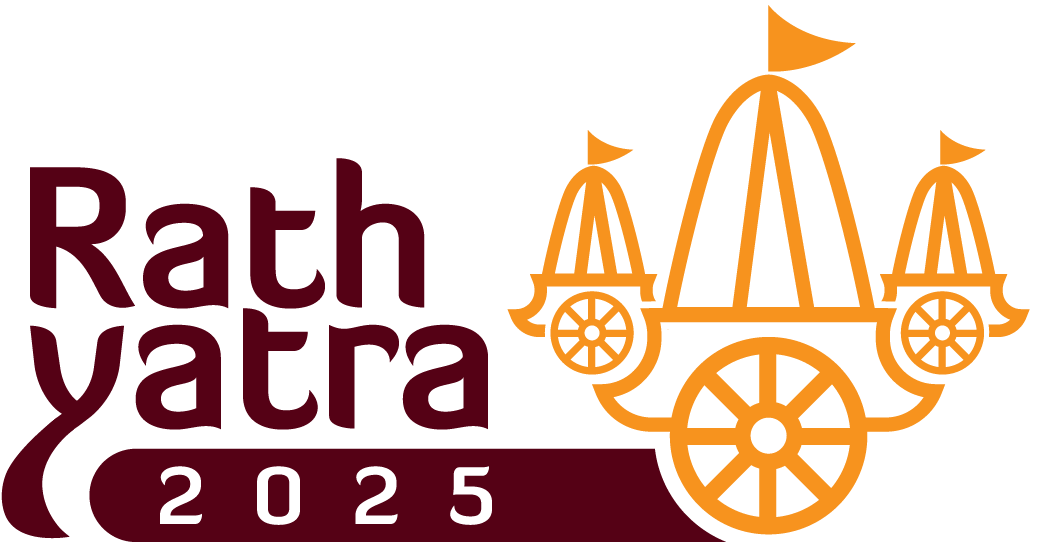
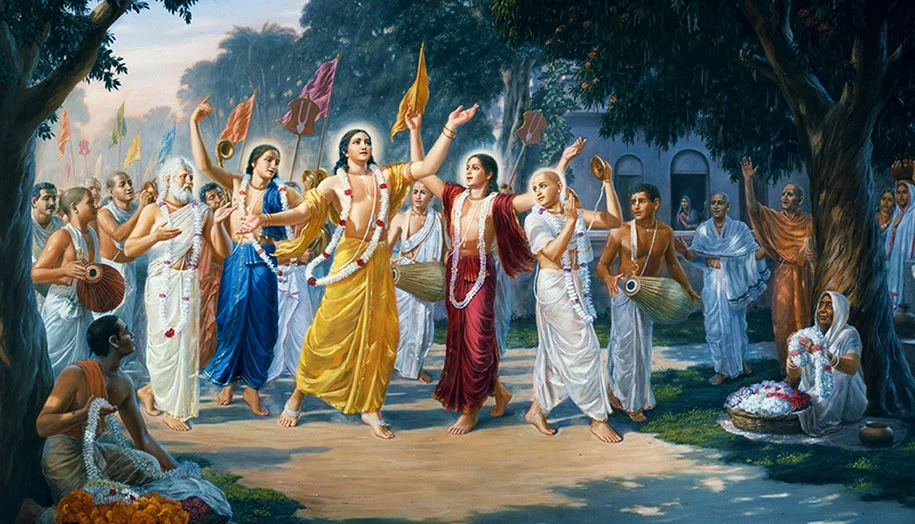
ISKCON
ISKCON
ISKCON
The International Society for Krishna Consciousness (ISKCON), commonly known in the West as the Hare Krishna movement, is a monotheistic branch of the Gaudiya Vaishnava spiritual tradition that dates to Lord Krishna, who appeared on Earth and spoke the Bhagavad Gita over five thousand years ago. ISKCON follows Krishna’s teachings as revealed in the sacred Vedas, including Bhagavad Gita and Bhagavata Purana.
Essential practices of Krishna Consciousness involve the chanting of God’s holy names—among several processes of devotional service—to bring about lasting happiness and peace in society by reviving our loving relationships with God.
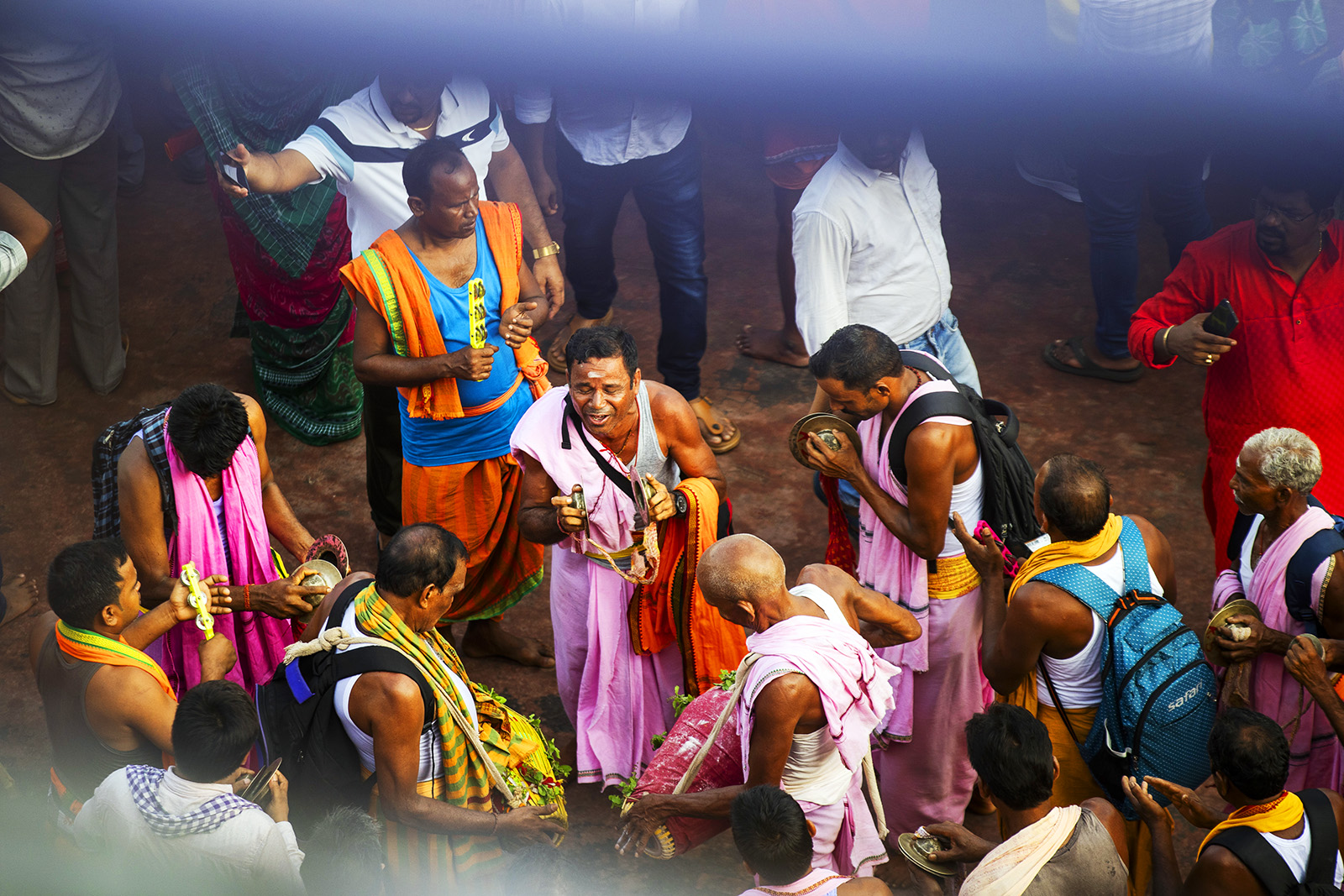
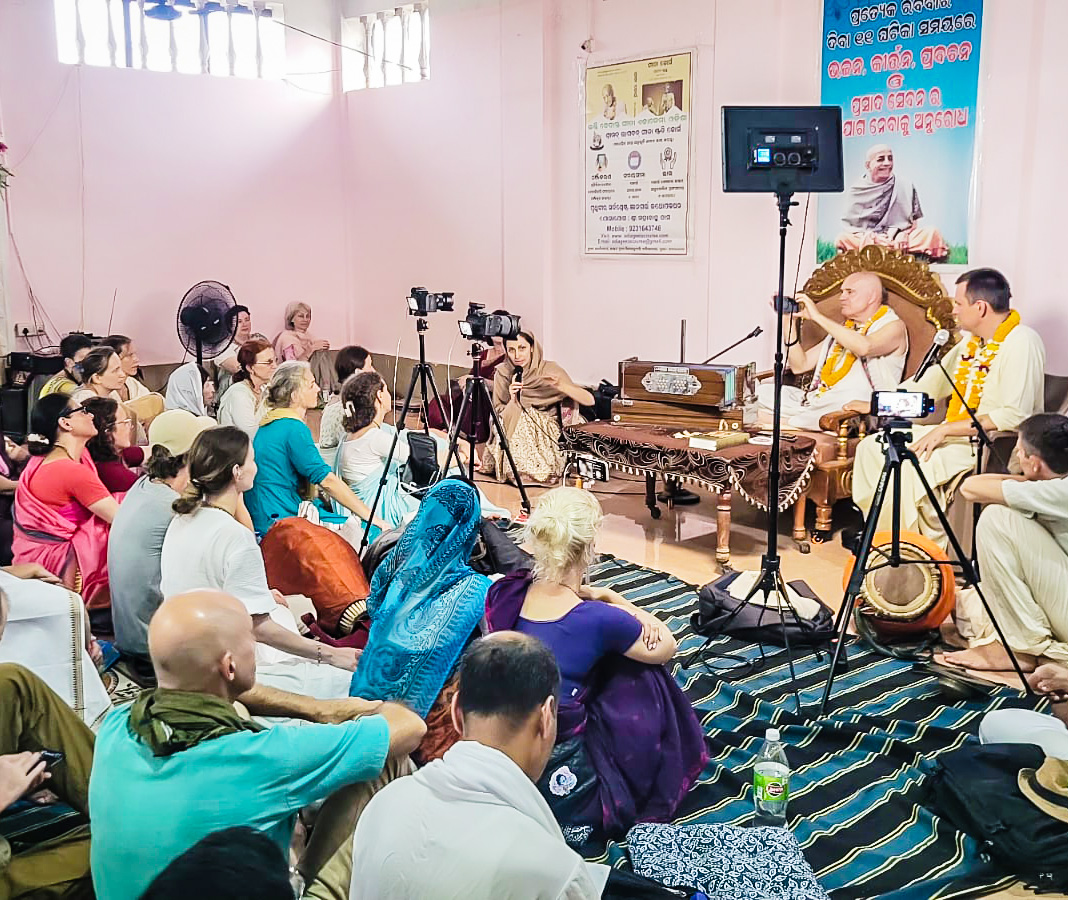
History records that 525 years ago Lord Krishna appeared as Sri Chaitanya Mahaprabhu in the form of His own devotee to establish the congregational chanting of God’s holy names, sankirtana, as the easiest and most sublime spiritual practice for this age. Sri Chaitanya Mahaprabhu popularised the chanting of the maha-mantra, comprising sacred names of God: Hare Krishna, Hare Krishna, Krishna Krishna, Hare Hare/ Hare Rama, Hare Rama, Rama Rama, Hare Hare.
In 1965, the prominent emissary of India’s spiritual teachings, Bhaktivedanta Swami Srila Prabhupada (1896-1977) brought Sri Chaitanya’s movement to the West and founded ISKCON in New York City under seemingly humble circumstances.
timeline of ISKCON’s recent history
In 1965, at the age of 69, Bhaktivedanta Swami Prabhupada left the holy land of Vrindavan, India, to spread Krishna’s message in the West on the order of his spiritual master. He arrived in Boston by freight ship, carrying $7 in change and a trunk of books about Krishna. For the first year he struggled alone, booking speaking engagements at yoga studios, YMCAs, and bohemian artists’ lofts, while living in the homes of people he met who sympathized with his cause and would give him temporary residence. He would often take a small bongo drum and sit under a tree in a public park to chant the holy names of Krishna. Curious onlookers would gather. Some joined in the chanting. Some began to take an active interest in his mission.
By 1966 Srila Prabhupada was living in New York City, in Manhattan’s then impoverished Lower East Side, and had begun regular weekly lectures on Bhagavad Gita, along with public chanting sessions, kirtan, in Tompkins Square Park. That same year, he incorporated ISKCON in New York City, envisioning that soon there would be centres around the world.
From 1966 to 1968, as more and more spiritual seekers became attracted to Krishna consciousness, he opened ISKCON temples in New York, Los Angeles, San Francisco, Seattle, Montreal, and Santa Fe, New Mexico.
In 1967, the first Rath Yatra festival outside of India was held in San Francisco. Ratha Yatra is one of the oldest and largest annual religious festivals in the world, performed each year in the holy city of Puri. Several million people line the streets to pull giant three-storey chariots carrying deity forms of Lord Krishna through the streets, accompanied by festive chanting of His names. This festival is now held by members of ISKCON in cities around the world.
From 1969 to 1973, temples opened in Europe, Canada, South America, Mexico, Africa, and India. In 1970, the Governing Body Commission, ISKCON’s managerial body, was established to oversee the growing society.
From 1970 to 1977, ISKCON built major centres at the holy pilgrimage sites of Mayapur and Vrindavan, India, and a large temple in Mumbai.
In 1972, Srila Prabhupada founded the publishing house Bhaktivedanta Book Trust (BBT), now the world’s foremost publisher of books on Krishna consciousness. Krishna.com is a website project of the BBT. From 1966 through 1977, Srila Prabhupada translated more than 40 volumes of the great classics of Krishna conscious literature from Sanskrit into English, giving elaborate commentaries synthesising the realisations of previous masters along with his own. These books include Bhagavad Gita As It Is, the definitive presentation of Lord Krishna’s teachings, Bhagavata Purana, the 18-volume history of Lord Krishna’s incarnations, pastimes and devotees, and Sri Caitanya caritamrta, the nine-volume biography and teachings of Sri Chaitanya Mahaprabhu. These books have been published by the BBT in more than 50 languages, with several million copies sold and distributed by members of ISKCON to people all over the world.
In 1973, the Bhaktivedanta Institute was formed to promote the teachings of the Vedas in scientific terms.
Since 1974, ISKCON Food for Life has run karma-free vegetarian food relief programmes in disaster areas and cities around the world.
In November 1977, Srila Prabhupada passed from this world. By that time, ISKCON had established more than 108 temples, centres, schools, farm communities, with more than 10,000 initiated members. .
In 1989, the Hare Krishna movement came out from the underground in the Soviet Union, as glasnost brought an end to persecution. By 1991, more than one million copies of Srila Prabhupada’s Bhagavad Gita As It Is had been sold in the former Soviet Union. .
In the early 1990s, various Internet projects were launched, including Krishna.com, ISKCON.com and other Hare Krishna websites. .
Today, ISKCON has about 500 centres around the world, with a worldwide congregation in the hundreds of thousands—from all walks of life. .
ISKCON IN PURI
In Puri, ISKCON has a centre near Swargadwar, a renowned cremation ground and beach area on the Bay of Bengal, known as ISKCON Bhaktikutir. This was the home of ISKCON’s Acharya Bhaktivinoda Thakur (born Kedarnath Datta in 1838), a prominent Gaudiya Vaishnava scholar, philosopher, and guru who played a significant role in the resurgence of Gaudiya Vaishnavism in India in the late 19th and early 20th centuries. He is considered the "seventh goswami" and is credited with bringing the teachings of Chaitanya Mahaprabhu to the English-speaking world.
ISKCON Bhaktikutir was opened in 1989. A second centre is in the making on a 20-acre plot purchased by Gaur Govind Swami Maharaj in 1986. The plot is located at Sipasarubali, Baliapanda, on the Marine Drive. It has a small temple and residence for brahmacharis (bachelors) grihastha (married) devotees. Plans are afoot to rear cows at a gaushala and carry out farming on vacant plot. This upcoming centre is the second-biggest national project for ISKCON after its headquarters in Mayapur in West Bengal’s Nadia district.
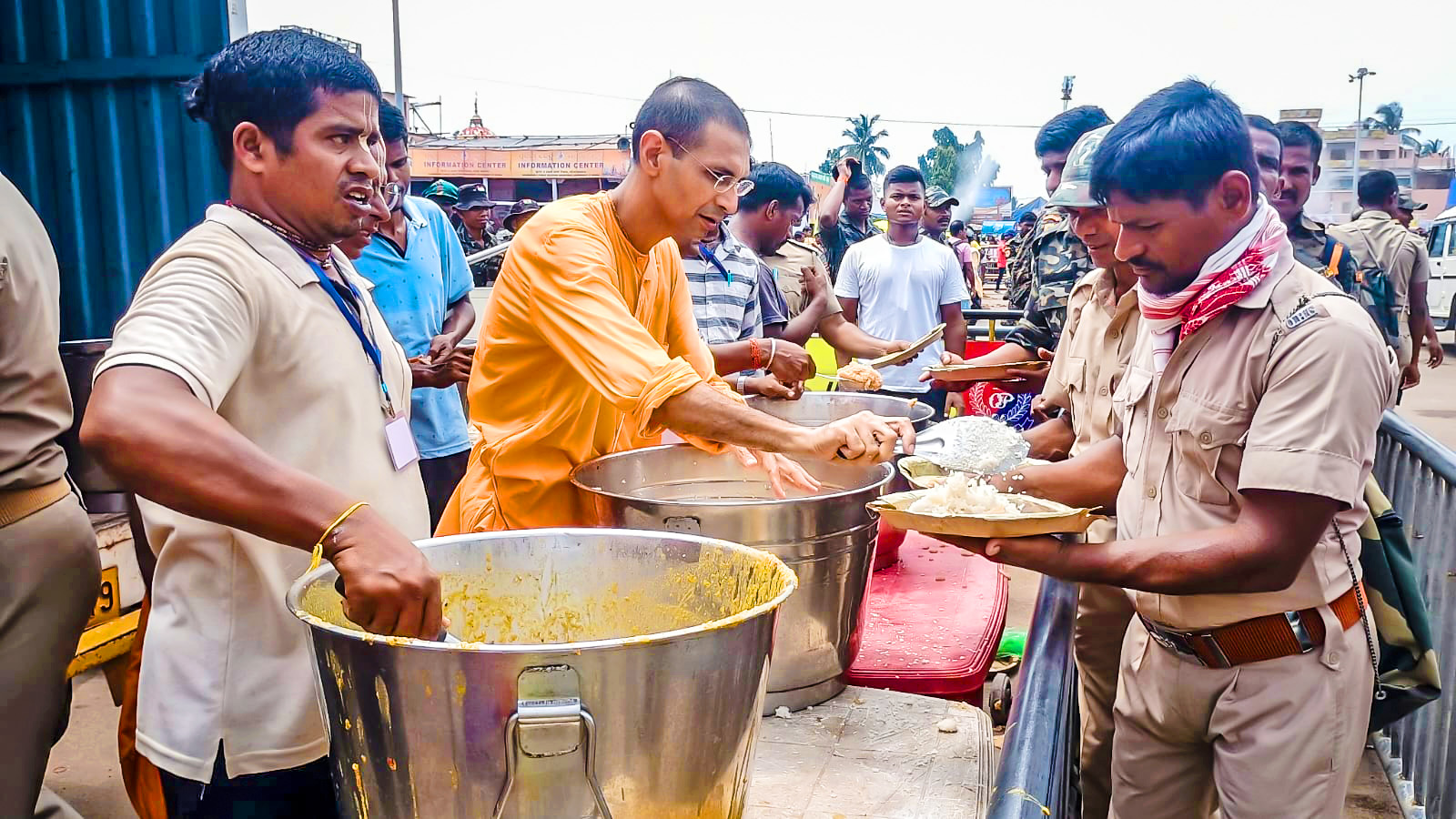
ISKCON’s Services
from arranging free medical camps, free seminars for youth, distribution of Bhagavad Gita, Bhagavatam, glories of Jagannath Dham Puri, and daily free food distribution for the poor and pilgrims.
During Rath Yatra, ISKCON provides food to all employees from government departments like police, volunteers and those associated with emergency services such as medical, fire, water supply etc. In 2024, over 5,000 pilgrims were fed daily during the two-week-long chariot festival.
ISKCON’s Upcoming Project
The Baliapanda project has major plans for expansion of ISKCON’s activities in Puri, including construction of a big Sri Sri Radha Krishna temple, atithi niwas (guest house), sanyasi ashram for priests, brahmachari ashram and big halls for socio-cultural programmes. A 500-bed hospital will be built since Puri lacks medical facilities along with a Bhaktivedanta Research Centre. Once fully operational over the next three years, the centre will organise multimedia exhibitions, which will showcase glories of Lord Jagannath and Chaitanyadev. While a massive Annakshetra (big community kitchen) will feed the poor, pilgrims, within 10-kilometre radius of Puri.